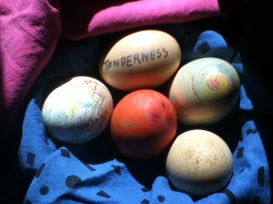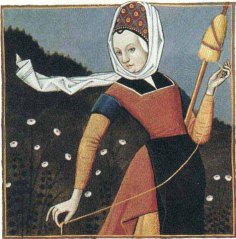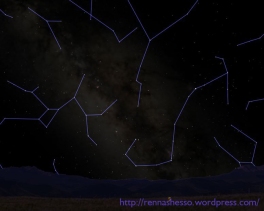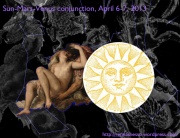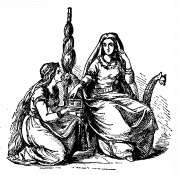She is well-pleased with the sound of rattles and of timbrels,
with the voice of flutes and the outcry of wolves and bright-eyed lions.
—“Homeric Hymn to the Mother of the Gods,” translation by Hugh G. Evelyn-White
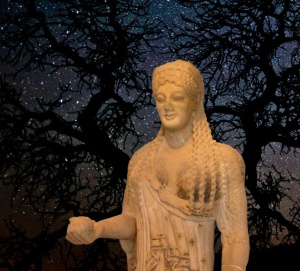 Is there any aroma so evocative as that of a fall morning? As a child, I associated autumn with the scent of burning leaves. Now, as that practice is relegated to the past, I realize the season has a scent of its own, independent of smoking leaf-piles along the curbs. The first hints of chill & damp are in the air, the remnants of gardens are past their peak, some late blooming flowers persist as the weather changes — all lend poignant fragrance to the crisp air.
Is there any aroma so evocative as that of a fall morning? As a child, I associated autumn with the scent of burning leaves. Now, as that practice is relegated to the past, I realize the season has a scent of its own, independent of smoking leaf-piles along the curbs. The first hints of chill & damp are in the air, the remnants of gardens are past their peak, some late blooming flowers persist as the weather changes — all lend poignant fragrance to the crisp air.
As the sun continues to journey southward, our days shift and shorten. And their style of beauty is transformed. Rich autumn colors — gilded with orange and red, often dramatically contrasted by grayer skies — rival the lush beauties of spring with a bittersweet twist: we know these transitional hues will fade rather than spread. Our Mabon holiday marks the Autumnal Equinox, midpoint between Sol’s far north point at Litha and Her distant southerly position at Yule. Check your trusty Farmer’s Almanac. Generally the Equinox falls within a day either way of September 21, based on the Sun’s declination (crossing from north of the equator to south), though the actual days and nights of equal length come a few days later.1
As the final harvest festival, Mabon is often called the Witches’ Thanksgiving. The association of the name “Mabon” with this holiday seems to be of recent and rather loose origin.2 Mabon (“Mab” = son; “on” = deity) was the son of Modron (“Modr” = Mother; “on” = deity). Stolen from His mother and long-imprisoned, finally set free through the help of the animal kingdom, Mabon’s tale makes up a portion of the great Welsh epic, the Mabinogion.3 None of this seems clearly connected with this equinox, until we note that some sources parallel Modron with Demeter, whose Eleusinian Mysteries were celebrated in late September.4,5 Though the details of those rites remain tantalizingly elusive, we know they were closely connected with the Demeter-Kore myth. When Her maiden-daughter Kore is in the Lower World, grieving Mother Demeter withholds Earth’s fertility until Kore returns to visit the Earth’s surface for a portion of each year. The annual Eleusinian rites celebrated Demeter’s fruitful bounties, but their deeper impact concerned the Afterlife we would all eventually face. These ancient rites served to “make happier the hopes of those that participate therein concerning both the end of life and their whole existence.”6
The weeks from this holiday through to the winter solstice tend to be an introspective time for many people, as we pull in our energies and pull out the afghans. Are we mirroring Kore’s sojourn into the Lower World? This can be a time to meet and come to grips with one’s own inner darknesses. Isn’t this what Kore does in agreeing to spend time in the Lower World? The Maiden-daughter transforms: Through Her pilgrimage into the dark (which, in the Homeric Hymn to Demeter, began when she coveted a “phallic” narcissus) Kore Herself becomes Mother.7 The seed of Kore’s mating with Hades gestates in this darkness.
In addition to fall-bright leaves and golden grasses as altar decorations, pomegranates and apples make symbolic and tasty appearances. An apple cut vertically through the center reveals a vaginal-looking view of the core; a horizontal cut through a second apple reveals a pentagram of seeds, an echo of the apple’s five-petalled blossom, flower turned to fruit, Maiden-Kore evolving into Mother-Demeter, holding the promise of new birth. Red apples hold the symbolic hues of the Triple Goddess: a sweet interior of white for the Maiden, a protective skin of red for the Mother, and those Crone-black seeds which will themselves transform to Maiden. From Scandinavia to Avalon, apples symbolized the Afterlife & rebirth.8
According to some versions of this story, it was Kore’s consumption of pomegranate seeds in the Lower World that obliged her to return to that realm annually. In the Bible’s Song of Songs, so rife with symbols, the Bride and Bridegroom come together in a garden of pomegranates. Rock lyrics of the 1950s and ‘60s notwithstanding, the point isn’t that a Maiden-girl-child is transformed into a Mother-woman through the magical wave of a male wand as his sexual love “makes a woman of her.” The point is that the union of female-male energies — physical, spiritual, psychological, emotional, the apparently contradictory elements within ourselves — is transformative. Pomegranate seeds eaten in circle make a wonderful symbolic step onto trance work: As we eat these seeds and accept our darknesses, what do we seek on our journey through the winter? What can our own dark currents teach us? What seeds of change are we harboring within ourselves?
Whether through husbandry or hunting, this is also the season when both domestic and wild animals were traditionally asked to give-away their lives for our larders. The farm animals that had consumed food since spring became food for the winter; wild animals that raised their young and grew plump through the summer were hunted most avidly in the autumn, before they migrated out of range or became scrawny from poor forage once the snows began.
Today we live in an age of year-round factory-farming and “manufactured” meat.9 Many people choose a vegetarian path for various reasons. However, this ancient animal theme is significant and well worth honoring, even if you prefer to carve a slab of tofu rather than turkey. Just as we’ve felt a heightened connection with Mother Earth while consuming the lush summer produce, Mabon can be a time to explore a stronger sense of our symbiotic connection with the animals of our planet. In many cultures, hunted creatures are thanked for giving themselves as food to the people; they’re honored with dances and prayers to help maintain good relationship so the animals will continue to make themselves available to the tribe in the future. Animals, in the flesh and in spirit, dance through so much of our mythology. Animal-helpers — ousel, stag, owl, eagle, salmon — are crucial in the tale of Mabon’s rescue.10 This is a fine time to acknowledge and honor our symbiotic connection with Earth’s other creatures.
RITUAL IDEAS & QUESTIONS
- How are we connecting now with Earth’s animal inhabitants?
- Are we in contact with our power animals?
- How do we honor and respect the animal-based foods we consume?
- As the nights lengthen, how do we perceive and use this darkness?
- Do you have a “dark side”? How do you view, work with and honor it?
- What are we gathering now to carry with us into the winter months?
______________________
“Homeric Hymn to the Mother of the Gods,” translation by Hugh G. Evelyn-White, quoted in The Great Mother, Erich Neumann, (Princeton: Bollingen Series, 1974), p. 271.
1. All celestial data from The Old Farmer’s Almanac
2. I base this on a very brief conversation with Celtic scholar Michael Ranauro at Dragonfest 1996. The linguistic info that immediately follows on the names “Modron” and “Mabon” also came from him.
3. Caitlin and John Matthews, Encyclopædia of Celtic Wisdom, (Elements: Rockport, MA, 1994), pp. 89-91.
4. Janet and Stewart Farrar, The Witches’ God, (Phoenix: Custer WA, 1989), pg. 199.
5. John and Caitlin Matthews, The Aquarian Guide to British & Irish Mythology, (Aquarian Press: Wellingborough, England, 1988), pp. 111, 112-3, 118-9. If we accept Modron/Demeter & Mabon/Kore parallels, have we uncovered evidence of a Celtic/Eleusinian Mystery Rite? Not quite, I think – more like common and persistent themes.
6. The quote is from Isocrates, in Barbara G. Walker, The Women’s Encyclopedia of Myths and Secrets, (Harper & Row: New York, 1983), pp. 218-220.
7. Neumann, ibid., pp. 305-325, on the Eleusinian mysteries.
8. Walker, ibid, pp. 48-50.
9. Jeremy Rifkin, The End of Work (G. P. Putnam’s Sons: New York, 1995), Chapter 8: “No More Farmers,” pp. 109-127, and John Robbins, Diet for a New America, (Stillpoint: Walpole NH, 1987).
10. Matthews, Encyclopædia of Celtic Wisdom, pp. 89-91.
Art: Kore figure, c. 530-520 BC, found on the Acropolis



